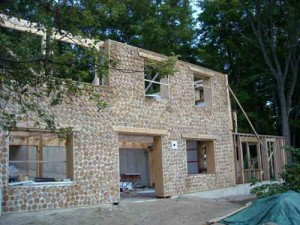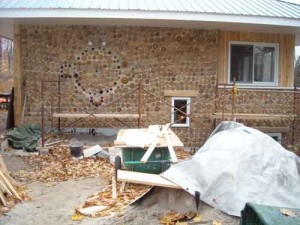 The cost of paying for a house is the greatest financial burden most Canadians will bear, and the load isn’t getting any lighter. Depending on the interest rate of your mortgage, you’ll pay 200% to 300% more for your house than the purchase price by the time you’re all done, with all that extra after-tax cash bleeding away as interest charges. It’s a sobering reality, but I know there’s an alternative to this kind of mainstream home ownership because I’ve followed it myself and seen others do the same. It’s not for everyone, but perhaps it’s for you.
The cost of paying for a house is the greatest financial burden most Canadians will bear, and the load isn’t getting any lighter. Depending on the interest rate of your mortgage, you’ll pay 200% to 300% more for your house than the purchase price by the time you’re all done, with all that extra after-tax cash bleeding away as interest charges. It’s a sobering reality, but I know there’s an alternative to this kind of mainstream home ownership because I’ve followed it myself and seen others do the same. It’s not for everyone, but perhaps it’s for you.
Most Canadians live in or near cities, never realizing how much inexpensive, beautiful and under-used land there is in the rural areas of our great country. For less than the cost of a good new car, you can buy a chunk of land the size of
a football field in many charming rural areas, then build a comfortable home for yourself, all at 25% to 30% of the cost of an ordinary big city house. You’re going to have to get dirty to make it happen, you’re going to need courage to buck the trend, but I know that some of us prefer this to the protracted blood-letting of a 30-year mortgage. What you don’t necessarily need for this to work is youth, experience or even the willingness to do all building work yourself, as my friends Linda and Chuc Willson prove. They’re both in their 60s, both have health issues, but that didn’t stop them from building a great and affordable new home in a wonderful hardwood forest.
Stackwall Construction
Neither Linda and Chuc had any building experience when they began, so they used a combination of hired labour, friends and plenty of their own sweat equity to create a beautiful home using a traditional method called stackwall construction. It’s an age-old building technique that uses short lengths of round tree trunks set into mortar to create a wall. One log is nestled into the depression created by the two logs below, with round ends sticking out. It’s sort of like stonework, except with wood. This option only makes sense in areas with lots of wind-blown cedars and logging waste, but it points to something fundamental about economical, owner-built homes. The best build-it-yourself housing option makes use of free, cheap, reclaimed and local materials whenever possible. It makes sense both financially and ecologically.
Bespoke Building
 Besides using green building materials, and a custom floor plan suited to their lifestyle, the Willsons incorporated art into many structural areas of their home. The bottle wall is one example. It’s a four foot circular pattern of coloured glass bottles that extend all the way through a west-facing wall. As the sun travels across the sky, its light passes more and more strongly through the glass, creating a rising display of colour. The Willsons also hired local artists to contribute to the project in other ways.
Besides using green building materials, and a custom floor plan suited to their lifestyle, the Willsons incorporated art into many structural areas of their home. The bottle wall is one example. It’s a four foot circular pattern of coloured glass bottles that extend all the way through a west-facing wall. As the sun travels across the sky, its light passes more and more strongly through the glass, creating a rising display of colour. The Willsons also hired local artists to contribute to the project in other ways.
The need for employment is one of the main reasons people choose to buy a home in urban and suburban places where mortgages are required and protracted owner-built construction programs probably won’t fly. But the world of
work is changing. More and more opportunities are emerging for great work beyond the tether of a particular physical office or traffic-clogged roadway. Chuc and Linda grow and sell vegetables and preserves they produce themselves. Some 21st-century pioneers I know plug into the corporate world remotely, earning urban paychecks without ever leaving their economical, beautiful and peaceful home place. Others I know make a living with art. More and more digital work of all kinds is being performed remotely. Anywhere that a laptop can find a wireless internet connection has now become a potential workplace.
Canada is one of the only country’s in the world with enough low-priced rural land where the mortgage-free, owner-built home ownership lifestyle is possible. And for those who’d rather not play the big mortgage game, it’s a good thing, too.